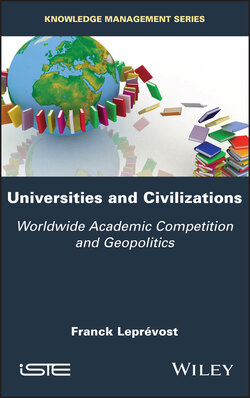Читать книгу Universities and Civilizations - Franck Leprevost - Страница 16
1.2. Fukuyama versus Huntington: the revenge of civilizations in the 21st Century
ОглавлениеNevertheless, let us try to give an initial justification for their relevance. The question from the American professor at Berkeley first of all refers to a situation that emerged from the Cold War. This implicitly ended4 with the fall of the USSR in 1991, thus putting an end to the “short” 20th Century that began in 1914 with the First World War.
This end was seen as a deliverance that went far beyond what was perceived as the cessation of East-West tensions. For many observers, capitalist and liberal ideology had won, and communist ideology had lost. This victory of one ideology over the other was to mark, in their view, the end of the great conflicts and open an infinite period of near-planetary peace: “the end of history”, to quote Francis Fukuyama’s famous prophecy5 about the fall of the Berlin Wall in 1989.
However, as early as the summer of 1993, Samuel Huntington published an article in the Foreign Affairs journal entitled “The Clash of Civilizations?” (Huntington 1993). In view of the controversy generated by this article on all continents6, the Harvard professor decided to develop his analysis of the world in a more substantial work. He would do so again three years later with his now famous 500-page book: The Clash of Civilizations and the Remaking of the World Order (Huntington 1996). The reasonable doubt he had in 1993 is no longer relevant in 1996: the question mark at the top of his article disappeared from the title of his book.
The very rich substance of Huntington’s work goes far beyond7 the scope of this chapter in describing the genesis of a thought. Let us content ourselves by summarizing the main message here: history is not finished with us; new conflicts of great magnitude will arise; these conflicts will no longer be based on ideologies, but on differences of civilizations and therefore on differences of cultures. Huntington gives the following definition of civilization in the second chapter of Part I of his book:
A civilization is thus the highest cultural grouping of people and the broadest level of cultural identity people have short of that which distinguishes humans from other species. It is defined both by common objective elements, such as language, history, religion, customs, institutions, and by subjective self-identification of people. People have levels of identity: a resident of Rome may define himself with varying degrees of intensity as a Roman, an Italian, a Catholic, a Christian, a European, a Westerner. The civilization to which he belongs is the broadest level of identification with which he strongly identifies. Civilizations are the biggest “we” within which we feel culturally at home as distinguished from all the other “thems” out there. (Huntington 1996, p. 43)
In the third chapter of Part I (Huntington 1996, pp. 56–78), he develops his argument to contest the very existence of a “universal civilization”, and justifies the fact that the “bigger us” opposing all the other “them” are the civilizations he designates and defines, and that they are strict parts of all humanity. In other words, the whole of humanity certainly distinguishes man from other animal species, but does not constitute a civilization. It merely encompasses civilizations, which is already a broad agenda. Let us jump to Huntington’s conclusion of this chapter:
It would, as Braudel observes, almost “be childish” to think that modernization or “the triumph of civilization in the singular” would lead to the end of the plurality of historical cultures embodied for centuries in the world’s great civilizations. Modernization, instead, strengthens those cultures and reduces the relative power of the West. In fundamental ways, the world is becoming more modern and less Western. (Huntington 1996, p. 78)
Returning to 1989 and 1991, the successive falls of the Berlin Wall, and then of the Soviet empire, did not mean the end of the conflicts. For humanity, they mark the transition from a bipolar world to a multipolar, multi-civilizational and multicultural world. More specifically, the cartography proposed by Huntington structures the world around the following civilizations and flagship countries:
– Western civilization, whose leading country is the United States;
– Chinese civilization, whose leading country is China;
– Hindu civilization, whose leading country is India;
– Japanese civilization, whose leading country is Japan;
– Orthodox civilization, whose leading country is Russia;
– Latin America, without a leading country;
– Muslim civilization, without a leading country;
– and (if possible) the African civilization, without a leading country (Huntington 1997, pp. 51–56, including “if possible”).
